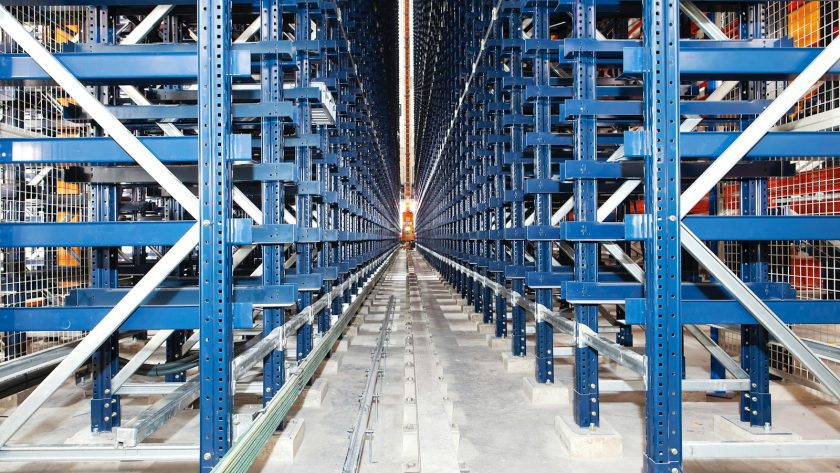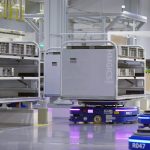Introduction to Logistic Robot Technology
In recent years, logistic robot technology has emerged as a pivotal factor in revolutionizing supply chain efficiency. With advancements in artificial intelligence (AI), machine learning, and robotics, the logistics sector has witnessed transformative changes. These innovations are not only optimizing operations but also significantly reducing costs, increasing speed, and improving accuracy.
The integration of logistic robots into various supply chain processes has become indispensable for companies aiming to maintain a competitive edge in the market. This article explores how logistic robot technology is reshaping supply chain efficiency and highlights its key benefits and applications.
The Role of Logistic Robots in Supply Chain Management
Logistic robots have become an integral part of modern supply chain operations. Utilizing sophisticated algorithms and sensors, these robots can perform a variety of tasks with high precision and speed. Here are some of the primary roles that logistic robots play in supply chain management:
- Automated Sorting and Packing
- Warehouse Navigation
- Real-Time Inventory Management
- Transport Automation
Automated Sorting and Packing
One of the significant advantages of logistic robot technology is its ability to automate sorting and packing processes. Robots equipped with AI can sort packages based on size, weight, and destination, thereby reducing human error and increasing operational efficiency. Automated packing systems ensure that products are securely and efficiently packed, minimizing damage during transportation and reducing packing time.
Warehouse Navigation
Warehouse navigation is another critical aspect where logistic robots excel. Traditionally, warehouse operations required human labor to move products from one location to another. However, with the advent of autonomous mobile robots (AMRs) and automated guided vehicles (AGVs), these tasks have become more streamlined. These robots use advanced sensors and mapping technologies to navigate through complex warehouse layouts, ensuring timely and accurate delivery of goods within the facility.
Real-Time Inventory Management
Maintaining accurate inventory levels is crucial for any supply chain operation. Logistic robots equipped with real-time data collection capabilities provide an accurate overview of inventory status. Using RFID tags and barcode scanners, these robots can perform inventory counts more frequently and rapidly than humans. This leads to better inventory control, minimizing instances of overstocking or stockouts, and ultimately enhancing supply chain efficiency.
Transport Automation
The transportation segment of the supply chain has also benefited immensely from logistic robot technology. Autonomous trucks and drones are being increasingly used for last-mile deliveries. These innovations not only reduce delivery times but also lower labor costs and minimize human intervention. Companies like Amazon and UPS are already experimenting with drone deliveries, showcasing the potential of transport automation in logistics.
Key Benefits of Logistic Robot Technology
The integration of logistic robot technology into supply chain operations offers several significant benefits. Here are some of the key advantages:
- Increased Efficiency
- Cost Reduction
- Improved Accuracy
- Enhanced Safety
- Scalability
Increased Efficiency
Logistic robots operate around the clock without fatigue, leading to a significant increase in efficiency. They can perform repetitive tasks faster and more accurately than human workers, ensuring a steady and reliable workflow. This efficiency translates into quicker order processing and shorter delivery times, enhancing overall customer satisfaction.
Cost Reduction
By automating various supply chain processes, companies can reduce labor costs and minimize expenses related to errors and inefficiencies. While the initial investment in logistic robot technology may be substantial, the long-term savings and return on investment (ROI) are considerable. Robots also reduce the need for temporary or seasonal labor, providing a more stable and predictable workforce.
Improved Accuracy
Human errors in sorting, packing, and inventory management can lead to costly mistakes and delays. Logistic robots, on the other hand, are programmed for precision and can perform these tasks with a high degree of accuracy. This accuracy ensures that orders are processed correctly, reducing the risk of returns and enhancing customer trust and satisfaction.
Enhanced Safety
Logistic robots contribute to a safer working environment by taking over dangerous or physically demanding tasks. For example, robots can lift heavy objects, navigate through hazardous areas, and perform tasks in extreme conditions. This reduces the risk of workplace injuries and ensures compliance with safety regulations.
Scalability
As businesses grow, their supply chain operations need to scale accordingly. Logistic robots offer the flexibility to scale operations without significant investments in additional human resources. Robots can be easily reprogrammed or upgraded to handle increased workloads, making them an ideal solution for growing companies.
Applications of Logistic Robot Technology
Logistic robot technology is being applied across various sectors, revolutionizing the way companies manage their supply chains. Here are some notable applications:
Retail and E-Commerce
In the retail and e-commerce sectors, logistic robots are enhancing the efficiency of order fulfillment centers. Autonomous robots pick and pack orders rapidly, reducing lead times and improving customer satisfaction. Large retailers like Amazon and Walmart are leveraging robot technology to streamline their operations and stay competitive.
Automotive Industry
The automotive industry also benefits from logistic robots, particularly in manufacturing and assembly processes. Robots ensure precise assembly, reduce production times, and enhance quality control. Additionally, logistic robots manage inventory and transport components within the factory, optimizing the entire production line.
Healthcare and Pharmaceuticals
In healthcare and pharmaceuticals, logistic robots play a crucial role in managing the supply chain of medical supplies and drugs. Robots ensure accurate tracking, storage, and delivery of critical medical supplies, reducing the risk of errors and improving patient care. Automated systems in pharmacies also facilitate quicker and more accurate dispensing of medications.
Future Trends in Logistic Robot Technology
The future of logistic robot technology looks promising, with continuous advancements expected to drive further improvements in supply chain efficiency. Key trends to watch for include:
- Integration of AI and Machine Learning
- Development of Collaborative Robots (Cobots)
- Advancements in Autonomous Vehicles
- Enhanced Connectivity through IoT
Integration of AI and Machine Learning
The integration of AI and machine learning into logistic robots will enable more sophisticated decision-making capabilities. Robots will be able to learn from past data, predict future trends, and optimize their operations accordingly. This will lead to even greater efficiency and accuracy in supply chain processes.
Development of Collaborative Robots (Cobots)
Collaborative robots, or cobots, are designed to work alongside human workers, enhancing productivity and safety. Cobots can assist with tasks that require human dexterity and judgment, while also taking over repetitive and physically demanding tasks. This collaboration maximizes the strengths of both robots and humans, leading to more efficient and versatile operations.
Advancements in Autonomous Vehicles
Advancements in autonomous vehicle technology will revolutionize freight transport and last-mile delivery. Autonomous trucks and delivery drones will become more prevalent, reducing the reliance on human drivers and expediting delivery times. These vehicles will be equipped with advanced navigation and safety features, ensuring reliable and efficient transport.
Enhanced Connectivity through IoT
The Internet of Things (IoT) will play a crucial role in enhancing connectivity and communication between logistic robots and other devices in the supply chain. IoT-enabled sensors will provide real-time data on various aspects of the supply chain, enabling more accurate monitoring and decision-making. This connectivity will lead to more synchronized and efficient operations.


